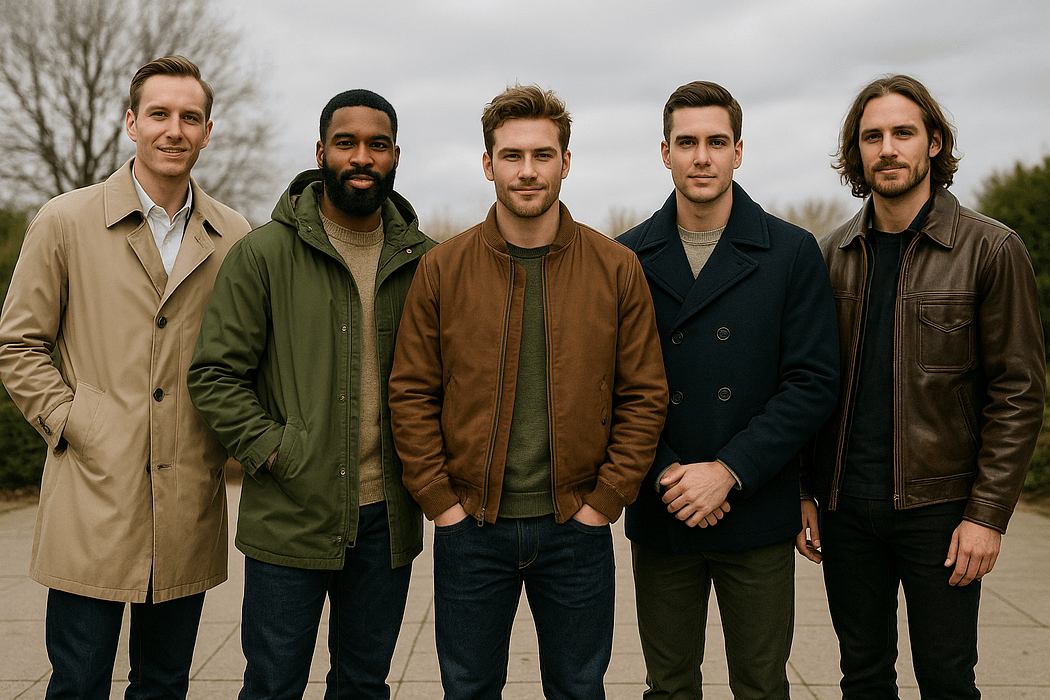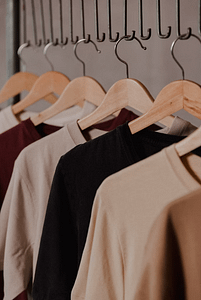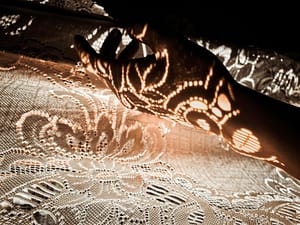Introduction
Men’s outerwear represents a dynamic category in the apparel industry—one that balances utility, performance, and evolving style demands. As consumer preferences shift toward garments that serve both functional and aesthetic needs, outerwear has emerged as a strategic product line with strong year-round potential.
For retailers, fashion brands, and sourcing professionals, investing in men’s outerwear is more than just seasonal planning—it’s a calculated response to market demand. From technical parkas to urban overcoats, today’s outerwear must deliver comfort, climate adaptability, and design relevance, making it a high-value focus in both mainstream and niche menswear collections.
Functional Outerwear: A Segment on the Rise
In recent years, functional outerwear has transitioned from a seasonal necessity to a year-round wardrobe staple. This shift has been driven by several market forces, including a heightened awareness of climate variability, increased urban mobility, and the mainstreaming of athleisure and performance-driven fashion.
Post-pandemic consumer behavior has further accelerated the demand for versatility in clothing. Men now seek outerwear that not only protects against the elements but also complements diverse settings—from commuting and casual outings to business travel and light outdoor activities. For brands and buyers, this presents a valuable opportunity: offering garments that combine utility with style opens up multiple market segments while justifying premium pricing.
Core Categories of Men’s Outerwear
Men’s outerwear spans a wide spectrum of styles, each serving distinct functions and consumer profiles. Understanding these core categories helps businesses tailor offerings to specific climates, use cases, and market tiers.
- Trench Coats
Lightweight and water-resistant, trench coats are ideal for transitional weather. They appeal to urban professionals seeking classic silhouettes with functional benefits.

- Parkas
Designed for cold climates, parkas are heavily insulated and often feature hoods with fur or faux-fur trim. Their appeal is strongest in northern markets and outdoor-oriented collections.

- Bomber Jackets
A staple in casualwear and streetwear, bombers offer a compact, fashionable option that works well in spring and fall assortments. Popular among younger demographics.

- Overcoats & Peacoats
Structured and elegant, these styles are key in formalwear collections. Overcoats often complement tailored suits, while peacoats bring a heritage military look.

- Utility Jackets & Field Coats
Known for durability and storage, these jackets attract consumers looking for rugged style. They align well with workwear or heritage-inspired brand identities.
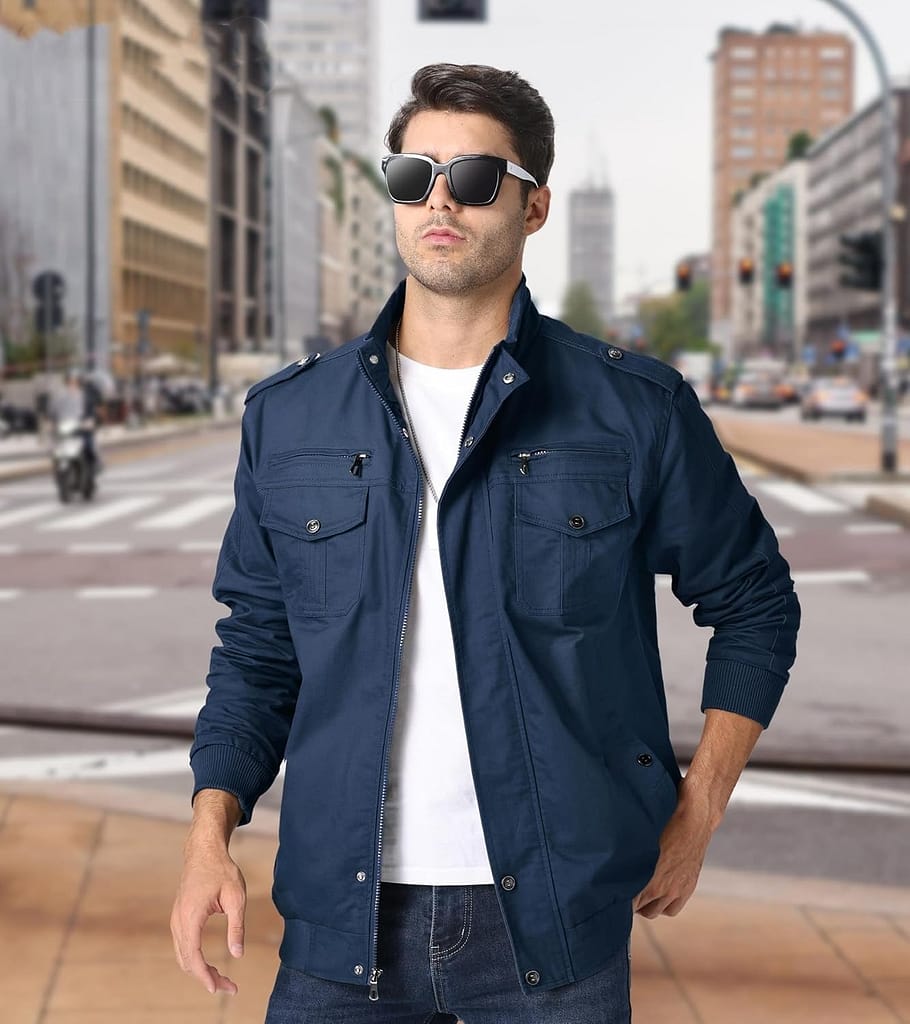
- Leather & Faux Leather Jackets
Iconic and seasonless, leather jackets offer strong visual identity and margin potential. Faux leather is increasingly used for its ethical appeal and lower cost.

- Windbreakers & Technical Shells
Lightweight and often waterproof, these are essential for sportswear and commuter categories. Ideal for layering and highly adaptable to global climates.

Key Functional Features Buyers Prioritize
As outerwear continues to bridge performance and lifestyle demands, business buyers are increasingly focused on technical features that elevate garment utility without compromising design. These features influence purchasing decisions across retail, OEM, and private label channels.
- Insulation Systems
Down, synthetic fill (such as PrimaLoft), and wool-blend linings are evaluated for warmth-to-weight ratio, compressibility, and regional suitability. Buyers often select varying insulation levels for multi-climate collections. - Water and Wind Resistance
Durable Water Repellent (DWR) coatings, PU membranes, and seam-sealed construction are essential in rain- and snow-ready garments. These enhancements are now expected even in style-forward outerwear.

- Breathability and Layering Compatibility
Fabric technologies that allow moisture escape (e.g., mesh lining, air-permeable membranes) are critical in active or commuter wear. Buyers also prioritize streamlined fits for easier layering. - Ergonomic Design Elements
Adjustable cuffs, drawcord hems, storm flaps, zip-vent systems, and detachable hoods contribute to wearer adaptability and garment functionality. - Sustainability Features
Certifications such as GRS (Global Recycled Standard) or bluesign® signal responsible sourcing. Recycled polyester, organic cotton blends, and plant-based insulations are now viable selling points for B2B buyers aiming to meet eco-conscious standards.
Fabric and Material Considerations
The foundation of any outerwear garment lies in its fabric composition. For business buyers, understanding material performance, cost-efficiency, and market positioning is essential when curating or developing outerwear collections.
- Performance Fabrics
Nylon and polyester dominate the outerwear segment due to their lightweight durability and adaptability for coatings and laminates. Softshells and hybrid materials provide a balance of weather resistance and comfort, catering to the activewear and commuter markets. - Insulation Choices
Natural down offers superior warmth-to-weight performance but raises ethical and cost concerns. Synthetic insulations, such as polyester fill or eco-down alternatives, are more cost-stable and appeal to sustainability-conscious buyers. Wool-blends remain popular in premium outerwear for their insulating properties and classic appeal. - Eco-Conscious Materials
The shift toward sustainability is reshaping sourcing strategies. Fabrics made from recycled PET bottles, biodegradable coatings, and organic cotton blends are increasingly in demand. Certifications like GOTS, OEKO-TEX®, and bluesign® help validate responsible production for business-facing procurement. - Durability and Abrasion Resistance
For rugged or utility-focused designs, high-denier weaves, ripstop constructions, and coated canvases offer superior abrasion resistance. These are key considerations in outerwear intended for workwear, outdoor, or travel segments.
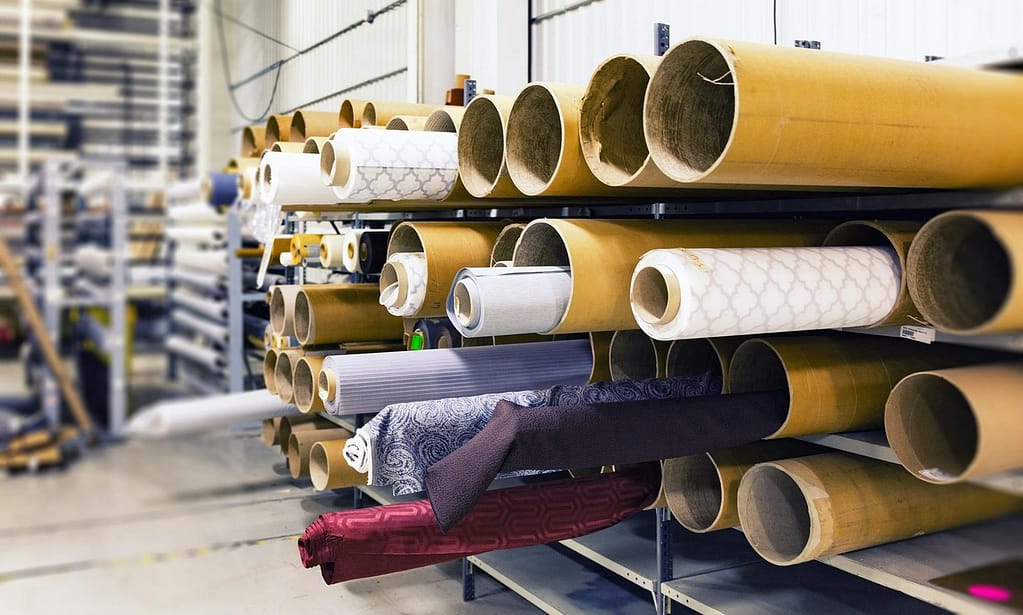
Design and Manufacturing Insights
For apparel businesses, the development of functional outerwear requires close alignment between design intent and manufacturing capability. From fit specifications to technical detailing, every phase impacts the product’s market performance and production efficiency.
- Regional Fit Preferences
Sizing expectations vary significantly across markets—U.S. customers typically prefer a more relaxed fit, while European and Asian consumers often favor a tailored silhouette. Adapting patterns to meet these regional demands is key to successful distribution. - MOQ and Assortment Planning
Minimum Order Quantities (MOQs) must be balanced against seasonal risks. Many buyers plan capsule drops across light shells, midweight jackets, and insulated parkas to optimize inventory rotation and customer choice across climate zones. - Lead Times and Production Capabilities
Outerwear often requires longer production lead times due to its multi-layer construction and technical requirements. Partnering with factories experienced in seam sealing, waterproof taping, or bonded fabrics ensures quality outcomes and reduced error rates. - CAD and Technical Pack Integration
High-function outerwear demands detailed tech packs and CAD renderings. These not only help communicate design details across the supply chain but also streamline sample development and quality control checkpoints.

Conclusion
Men’s outerwear continues to stand out as a category where fashion meets functionality—and where business opportunity meets consumer demand. From trench coats to parkas, each style offers a chance to blend utility with brand identity, appealing to diverse lifestyle needs and price points.
For apparel businesses, the path forward lies in curating or manufacturing outerwear that not only performs across conditions but also aligns with sustainability standards, regional fit preferences, and market trends. Functional fashion isn’t a niche—it’s a growing standard, and outerwear is one of its most compelling expressions.
At GOPHERWOOD, we specialize in delivering high-quality, functional menswear—particularly outerwear—designed to meet the demands of today’s dynamic apparel markets. Whether you’re sourcing for seasonal collections or developing long-term product lines, GOPHERWOOD is your reliable partner in crafting outerwear that combines performance, durability, and modern appeal.

